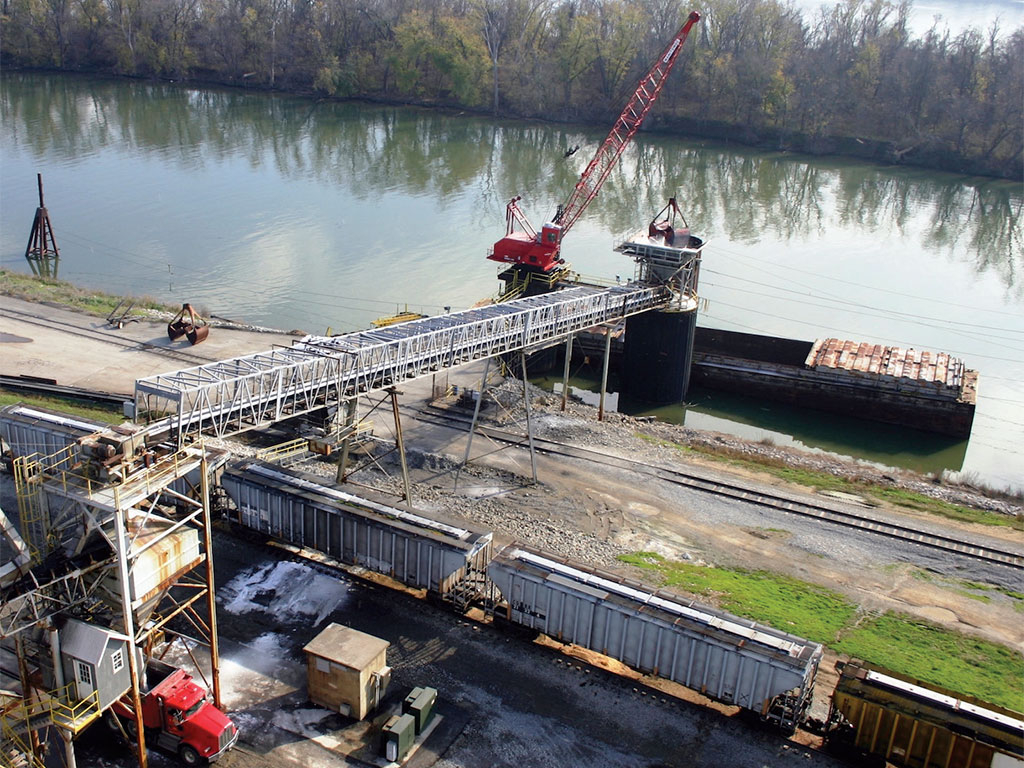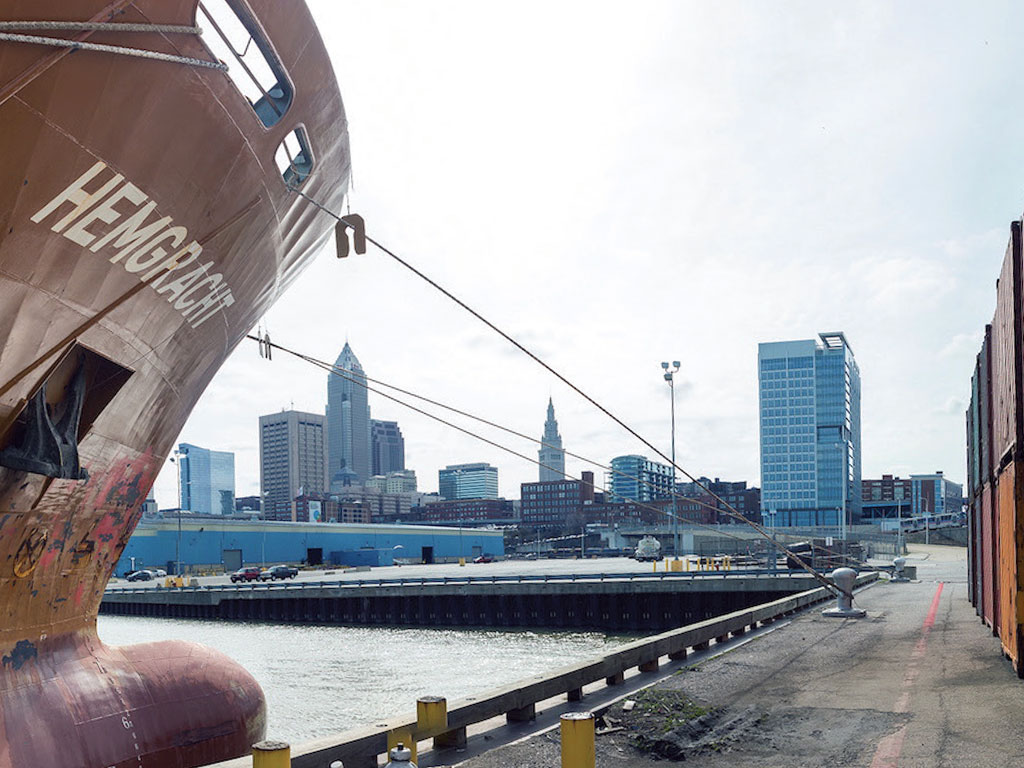Even absent traditional intermodal container activity, rail links offer vital connections for proficiently moving cargo in and out of Midwest lake and river ports. And leadership of Port Milwaukee is hoping a sought-after intermodal facility will further rail’s role in the region.
While broadly defined intermodalism is crucial to operations at such Midwest ports as those of Cleveland and Indiana, it is in Milwaukee that officials are specifically eyeing deployment of an intermodal container facility to provide a cost-effective, time-efficient alternative to movement of boxes via coastal maritime hubs.
Shortly after Port Milwaukee’s intermodal container service was discontinued a decade ago as part of Canadian Pacific Railway’s precision railroading initiative implementation, Milwaukee port executives began coordination with the Wisconsin Department of Transportation, as well as CP and Union Pacific Railroad, on efforts to restore such service through a dedicated installation.

“Our relationships with both UP and CP remain critical to our work at Port Milwaukee,” said Tindall-Schlicht, who noted that CP serves Milwaukee’s Lake Michigan port five times a week and UP does so between three and five days per week. “Having multiple rail lines is part of our competitive advantage.”
Not surprisingly, Port Milwaukee has expressed to the Surface Transportation Board its support of the merger of CP with Kansas City Southern Railway.
For now, Port Milwaukee is relying on the vast intermodal rail infrastructure of the Chicago area to meet local demands for containerized goods, including for the building of the 25-story Ascent MKE residential tower, which is being ballyhooed as the world’s tallest mass timber structure. Containers with goods for that endeavor are trucked to Port Milwaukee from Chicagoland intermodal rail hubs, with delivery to the project site when needed.
Also, Tindall-Schlicht sees competitive rail services furnishing essential links for the $31 million agricultural export facility being built along Port Milwaukee’s inner harbor by The DeLong Co. Inc. The DeLong facility is anticipated to be operational by April 2023, offering what Tindall-Schlicht termed “a catalytic opportunity for Wisconsin farmers to connect with worldwide markets.”
Rail cars have long served as conduits for grains and other exports from Midwest ports, including the Ports of Indiana, where steel, potash and coal are also part of the mix.
“Rail activity is up for the Ports of Indiana,” Vanta E. Coda II, chief executive officer of the Ports of Indiana, told AJOT, projecting year-over-year increases in overall rail numbers encompassing the entity’s three ports, led by Jeffersonville, across the Ohio River from Louisville, Kentucky.

With a boost from a $10 million federal infrastructure grant, the Ports of Indiana-Jeffersonville is advancing more than $24 million in enhancements adding nearly 4 miles to the port’s existing 11-mile rail network. The port is served by Class III operator Louisville & Indiana Railroad, offering direct connections to Class I rail providers CSX and Norfolk Southern.
Both CSX and NS are rail providers as well via the Port of Cleveland, promoted as the only Great Lakes port handling import and export marine containers.
“It’s all about speed and efficiency and giving the shippers a different option,” Jade D. Davis, the Port of Cleveland’s vice president of external affairs, said of the Cleveland-Europe Express, or CEE, billed as the only direct, scheduled vessel service between the Great Lakes and Europe.
The CEE was initiated seven years ago, with the Port of Cleveland itself chartering the first ship, according to Davis, before the twice-monthly service was assumed by the Amsterdam-based Spliethoff Group.
In late August, Spliethoff added the containership Peyton Lynn C, owned by Doornekamp Shipping Services, to the CEE service, augmenting Spliethoff-owned multipurpose tweendeckers on the route between Antwerp in Belgium, Doornekamp’s terminal at Picton on Lake Ontario in southeastern Ontario and the Port of Cleveland on Lake Erie.

Most of the containers moving on the CEE go in and out by truck, according to Davis, but CSX and NS rails, connected to the Port of Cleveland via an OmniTrax short line, handle significant volumes of project cargos throughout a region spanning Michigan, western Pennsylvania, southern Ohio, Indiana and Chicago.
In the Great Lakes-St. Lawrence Seaway realm, containerized cargo moves also have been on the upswing at the Port of Hamilton, on the western tip of Lake Ontario. In June, Hamilton Container Terminal partnered with the Hamilton-Oshawa Port Authority, vessel operator Desgagnés, Federal Marine Terminals and the Port of Montréal in launching a short-sea container service between Hamilton and Montréal.
Ken Carey, manager of business development for the St. Lawrence Seaway Management Corp., marketed as Hwy H2O, noted the importance of rail serving ports throughout the two-nation “Locks and Lakes” region in moving grain and other export cargos, as well as such imports as steel, salt and oversize wind energy units.
“We’ve experienced solid service to rail,” Carey told AJOT. “Very strong relationships are maintained with the short lines and Class Is, and things move quite well. “The interconnectivity of the system is critical,” Carey added. “With the rail serving pretty much every port, it’s a model that’s worked very well for years.”





